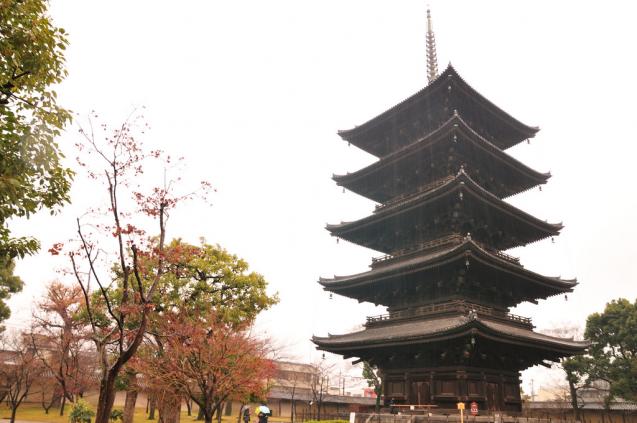
Toji Temple, literally means "Temple of the East" is one of the 17 Historic Monuments of Ancient Kyoto, composing of Buddhist temples, Shinto shrines and a castle, which are designated as UNESCO World Heritage Sites.
It was built in Heian Period, way back 794 together with its obsolete sister temple Sai-ji (West Temple), years after the capital was relocated to Kyoto. Both served as the capital's guardian temples.
The work was entrusted to monk Kukai, who was introduced from China the teachings of the Shingon-shu sect of Japanese Buddhism. It has been one of the most important Shingon temple, disseminating this new sect.
The most enormous structure within the temple complex, is of course the five-tiered pagoda.
Things to see
Apart from the five story pagoda, the signature structure of Toji, there are several edifices one must not skip seeing in sojourning through temple complex.
The main hall "kondo" enshrines thge triad of Yakushi Nyorai (the Buddha of healing); the lecture hall "kodo" houses a large sculpted mandala, including a tutelary figure of the solar Great Buddha called Dainichi Nyorai, surrounded by 21 satellite statues arranged in groups; and at the center erects Fudo Myo-o, "the immutable one".
Every 21st of the month, there are flea market held in front of the temple, trading antiques, secondhand items, old kimonos, and what not.
The temple can be reached via a 15-minute walk southwest of Kyoto Station. Alternatively, the nearest station is Toji Station (Kintetsu Kyoto Line), which is 5-minutes on-foot to the temple.
The temple is open all throughout the year, and operates from 8:30-17:30 (until 16:30 from mid September to mid March; entry ends 30 minutes before closing time). Fees costs 500 yen, and 800 yen during special openings of the pagoda.
Submit Itinerary
Signup
- Sign Up
- Already a member? Login Now!
